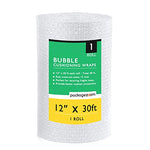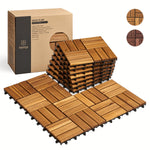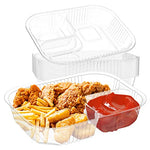You have no items in your shopping cart.
Ensuring Safe and Efficient Storage and Shipping with Plastic Drums & Barrels
Plastic drums and barrels are essential containers used in various industries for storing and shipping a wide range of products, from chemicals and pharmaceuticals to food and beverages. To maintain product integrity and ensure safety throughout the storage and shipping process, it's crucial to follow best practices and guidelines. In this comprehensive guide, we'll provide expert tips and insights to help you make the most out of plastic drums and barrels, ensuring your goods reach their destination intact and in optimal condition.
Tips for Storing and Shipping in Plastic Drums & Barrels
1. Choose the Right Type of Plastic Drum or Barrel
Selecting the appropriate type of plastic drum or barrel is the first step in ensuring successful storage and shipping. Consider the nature of your product, its compatibility with different plastic materials, and any specific regulations or requirements for your industry.
2. Optimize Packaging to Prevent Leaks and Spills
To avoid costly mishaps during transportation, ensure your products are well-packaged in the plastic drums or barrels. Use appropriate sealing techniques and consider adding extra protective layers to safeguard against leaks and spills.
3. Label and Document with Accuracy
Properly label each plastic drum or barrel with essential information, including product name, hazardous warnings (if applicable), batch numbers, and expiration dates. Accurate documentation is critical for traceability and compliance purposes.
4. Implement FIFO (First-In-First-Out) Method
When storing products for an extended period, adopt the FIFO method to ensure older inventory is used first. This practice helps prevent product spoilage and waste while maintaining product quality.
5. Regularly Inspect for Damage or Wear
Perform routine inspections of plastic drums and barrels for any signs of damage, wear, or degradation. Identifying issues early can prevent product contamination and ensure the containers remain in top condition for shipping.
6. Store in a Controlled Environment
Maintaining a controlled storage environment, such as temperature and humidity-controlled warehouses, is crucial for certain products. This helps preserve the quality and shelf life of goods during storage.
7. Comply with Handling and Transportation Regulations
Be aware of and comply with all handling and transportation regulations applicable to your products. This includes proper labeling, use of appropriate safety equipment, and adherence to transportation guidelines.
8. Consider UN/DOT Certification
For hazardous materials, ensure that your plastic drums and barrels are UN/DOT certified. This certification signifies compliance with international standards for safe transportation of dangerous goods.
9. Implement Secure Closure Systems
Utilize secure closure systems such as tamper-evident seals and locking mechanisms to prevent unauthorized access and tampering during storage and shipping.
10. Train Staff for Safe Handling
Properly train employees who handle plastic drums and barrels to minimize the risk of accidents and ensure the safety of both personnel and products.
11. Stack Drums and Barrels Correctly
When storing or transporting multiple drums or barrels, stack them properly to prevent damage or collapse. Follow weight limitations and stacking guidelines to maintain stability.
12. Conduct Periodic Cleanings
Regularly clean and sanitize plastic drums and barrels to avoid cross-contamination and maintain the integrity of the products they contain.
13. Use Pallets for Easy Handling
Place plastic drums and barrels on pallets to facilitate easy handling with forklifts or pallet jacks during transportation.
14. Monitor and Control Environmental Factors
Monitor and control environmental factors like temperature and humidity during transportation, especially for temperature-sensitive products.
15. Perform Drop and Impact Tests
Before shipping, conduct drop and impact tests to ensure the durability of plastic drums and barrels during transit.
16. Opt for Recyclable and Eco-Friendly Options
Consider using recyclable and eco-friendly plastic drums and barrels to reduce environmental impact and enhance sustainability efforts.
17. Monitor Seal Integrity
Regularly inspect the seals of plastic drums and barrels to verify their integrity and prevent any leakage during transportation.
18. Ensure Proper Ventilation
For products that require ventilation during storage and shipping, choose plastic drums and barrels with appropriate venting options.
19. Take Precautions for Hazardous Materials
Follow all safety protocols and guidelines when handling and shipping hazardous materials in plastic drums and barrels.
20. Consider Insulation for Temperature Control
For temperature-sensitive products, use insulated plastic drums and barrels to maintain the required temperature during transportation.
21. Monitor Weight Limits
Always adhere to weight limits specified for plastic drums and barrels during storage and shipping to avoid overloading.
22. Plan for Contingencies
Develop contingency plans for unforeseen circumstances during shipping, such as delays or adverse weather conditions.
23. Track Shipments in Real-Time
Utilize modern tracking technology to monitor the location and condition of shipments in real-time.
24. Collaborate with Reliable Carriers
Choose reputable carriers with a proven track record for safe and timely deliveries.
25. Seek Expert Advice
When in doubt, consult industry experts and professionals for advice on specific storage and shipping requirements.
Frequently Asked Questions (FAQs)
1. Are Plastic Drums and Barrels Suitable for Food Storage?
Yes, plastic drums and barrels made from food-grade materials are safe and suitable for storing food products. Ensure the containers are certified as food-safe and comply with relevant regulations.
2. Can I Reuse Plastic Drums and Barrels?
Yes, plastic drums and barrels designed for reuse can be cleaned, inspected, and reused for storage and shipping, reducing waste and promoting sustainability.
3. What Are the Advantages of Using Plastic Drums and Barrels?
Plastic drums and barrels offer several advantages, including lightweight design, resistance to corrosion and chemicals, and the ability to be molded into various shapes and sizes.
4. How Do I Dispose of Empty Plastic Drums and Barrels?
Dispose of empty plastic drums and barrels responsibly by following local recycling guidelines or contacting recycling facilities that accept plastic materials.
5. Can Plastic Drums and Barrels Withstand Extreme Temperatures?
The ability of plastic drums and barrels to withstand extreme temperatures depends on the type of plastic used. Some plastics are more suitable for high temperatures, while others are better for low temperatures.
6. Can I Ship Hazardous Materials in Plastic Drums?
Yes, plastic drums and barrels can be used to transport hazardous materials, provided they are UN/DOT certified for such use and comply with all applicable regulations.
Ensuring Quality and Safety with Plastic Drums & Barrels
Using plastic drums and barrels for storing and shipping goods can significantly impact product quality and safety. By following the expert tips and best practices outlined in this comprehensive guide, you can enhance the efficiency and reliability of your storage and shipping processes. Remember to choose the right type of plastic container, comply with regulations, and prioritize safety at every step. With proper handling and care, plastic drums and barrels can prove to be reliable allies in your business's storage and shipping endeavors.








